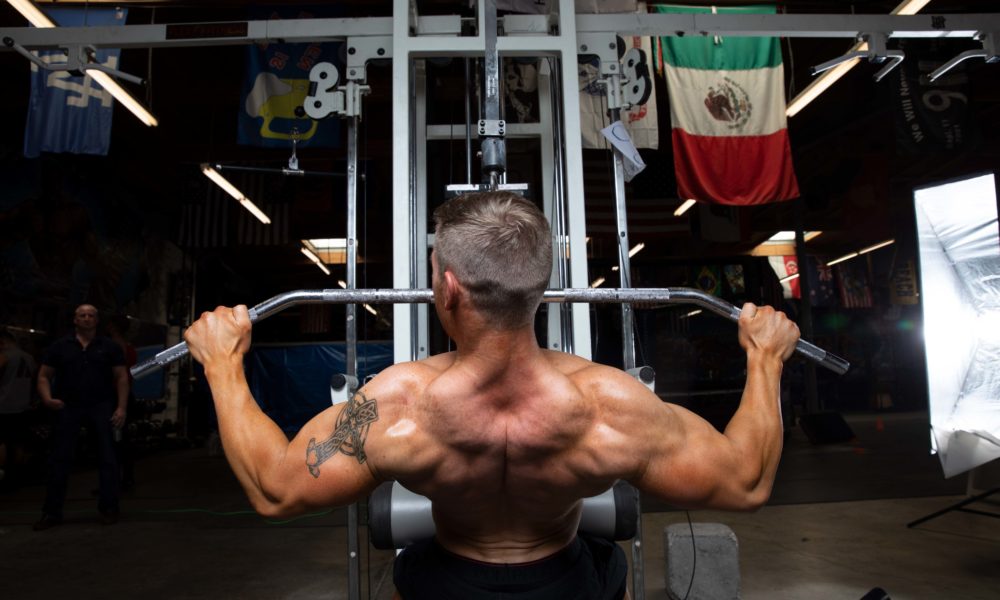

How to Enhance Your Lats
If you’ve spent some time in the gym, you will know that a V-shaped physique is all the envy. Many bodybuilders go to great lengths to tone their backs. However, there’s more than appertains to shoulder and back training than meets the eye.
If you would like to attain that V-shaped physique, the importance of building your lats is critical. First, ripped lats improve upper body stability and flexibility. Furthermore, the dynamic range of movement found in lat-centered exercises is vital for reducing the risk of injury.

That aside, various workouts improve the structure and mobility of your lats. But first, you need to understand why lats are so crucial in the evolution of bodybuilding.
A Quick Lats Anatomy Lesson
Lats get their name from the Latin phrase latissimus dorsi, which translates to “broadest muscle on the back.” Lats originate beneath the armpits running a course lengthwise by your sides. Finally, they attach to the spine and hip bone. As such, these muscles almost form a perfect wedge or V-shape.
Activation of lats results in three significant outcomes. First, lats are responsible for the adduction of the arm. When lats contract, they cause movement of the arm toward the body from a T-shaped stance. Secondly, if only one lat is activated, it results in lateral flexion or extension of the lumbar spine. The third outcome, when other back muscles balance the contraction of lats, causes rotation of the upper body or extension of the spine to the upright position.
Different Lat Exercises
It is essential to note that there is a wide selection of lat exercises. Here are some recommended exercises that will enhance your lats.
- Barbell row
A significant reason why barbell rows are a staple in the lifting community is their simplicity and remarkable effectiveness. This workout will singlehandedly transform you into the Incredible Hulk! Since it hinges on fixed weights, it takes the lead over dumbbell rows by allowing a higher degree of motion and coordination necessary for building a healthy back and spine.
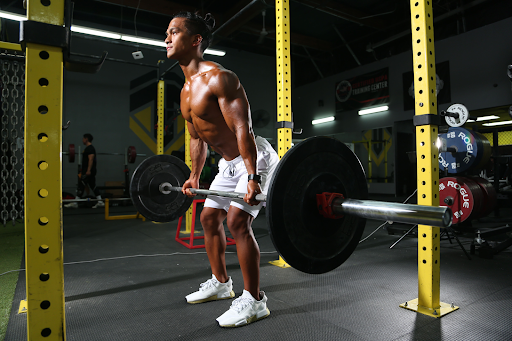
How it’s done:
Select weights and load them on a barbell, and stand over the loaded barbell. Flex your knees and hips, making a 45-degree angle at the hips. Grab the bar with an overhand grip and hinge upwards only at the knees, pushing through your heels while keeping your upper body static. This stance is your starting position. Pull the barbell to your chest and control its descent to the starting position. Repeat to your determined number of sets and reps.
Number of reps – conservative, between 6-8 (10 max), 2-3 sets
- Deadlifts
Deadlifts are double-sided. While they are renowned for stimulating the growth of glutes and hammies, they can also affect lats development. Lats activate during concentric lifting, and this is why deadlifts are ideal for wholesome bodybuilding.
How it’s done:
Load a barbell and stand close to it with toes almost under the bar. Place your feet shoulder-width apart, bend your knees until they form a 90-degree angle, and the thighs parallel the floor. Grab the barbell with a slightly wider than shoulder-width apart overhand grip. Lift the barbell off the floor by hinging upwards and bracing your back and core to the up position. Hold for a couple of seconds before lowering and resting the barbell on the floor. After a count of two, repeat the movement.
Number of reps – 6-10, 3 sets.
- Deadstop row
While the deadstop row and barbell rows may look similar, the difference is paper-thin: in deadstop rows, similar movement to the barbell row is used, but at the end of the lowering phase, the barbell is fully lowered to the ground. This modification eases the level of stress your lower back endures and has minimal possibility of injury.
Nevertheless, both workouts exceptionally activate lats, upper back, and arms.
How it’s done:
Get into the same posture as barbell rows – knees bent and torso hinged at a 45-degree angle to the ground. Brace your core and back to stabilize your spine. With an overhand grip, grab the bar and push upward using your thighs but maintain your trunk’s original position. Pull the barbell to your chest, and during the lowering phase, take it down to the floor. Pause for two seconds and repeat.
Number of reps – 8-12 reps, with a best of 3 sets.
- Dumbbell pullover
Dumbbell pullovers are exceptional for their top-notch muscle-hypertrophy effects on abs and chest muscles. The icing on top of the cake is that this routine’s row motion is founded on natural movement, particularly in the lifting phase that optimally activates lats.
How it’s done:
Lie face upward on a bench and grip the bar section of a dumbbell with both your hands. Straighten your arms but keep a slight flex at the elbows. Once set, draw them back behind your head in an arc and when you feel a stretch through your chest, stop and lift the weights back through the same arc. Pause for a few seconds and hit your target number of reps.
Number of reps – 8 to 12, 3 sets
- Dumbbell row
If you’ve been looking for a robust workout with a dynamic motion sequence to benefit your back and shoulder simultaneously, look no further than dumbbell rows. Add this to your workout arsenal if you are yearning for a simple yet effective workout to enhance your lats.
How it’s done:
Balance your weight using a bench or rack by placing your bent knee and outstretched arm over it to enhance stability. Brace your core and back to stabilize your spine, and pick your desired dumbbell weight using your free arm. While keeping your elbow bent, lift the dumbbell to your ribcage. At the top, squeeze your shoulder blades and then gradually descend to your starting position.
Number of reps – target three sets of 8 to 12 reps using moderately heavy dumbbells.
- Pull-ups and chin-ups
You probably know that pull-ups and chin-ups are a goldmine for upper body strength and development. Many lifters perform this workout because they promote the development of the shoulder joint while also stimulating the positive growth of lats and abs. Furthermore, the variations are straightforward: grab a bar with an overhand grip for pull-ups and an underhand grip for chin-ups.
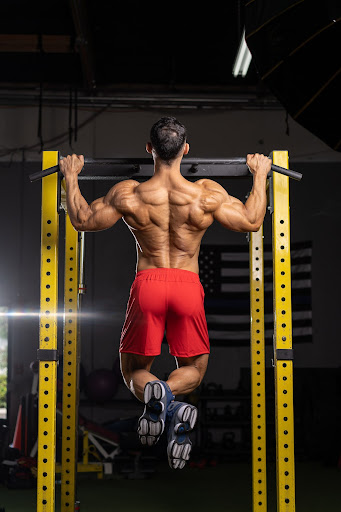
How it’s done:
Get set on a pullup bar as follows: grab the bar with an underhand grip for pullups or an overhand grip for pull-ups. Pull your body toward the bar, and descend to your starting position when it is chest level. Keep in mind that to minimize injury, do not swing or create momentum in the lifting phase.
Number of reps – go for 8-10 reps for a total of 3 sets.
- Lat pulldowns
Lat pulldowns are fundamentally a more straightforward adaptation of chin-ups and pullups. While both are based on the same principle movements, lat pulldowns are performed on a pulldown station. Efficiency is furthermore escalated since you don’t focus as much energy on grip and stabilization issues.
How it’s done:
On a pulldown station, grab a bar with a slightly wider than shoulder-width overhand grip. Engage your back and abs, and keep your face neutral and upright. Pull the bar to your chest by flexing your elbows and ensuring a deep squeeze throughout your back. Hold for a count of two and release.
Number of reps – Work for three sets of 10 to 12 reps.
- Renegade row
Renegade rows are one of the leading energy-intense workouts that impeccably enhance lats and chest and shoulders. This workout will get your muscles sore and aching in no time. Therefore, when starting, don’t shy from using light weights so that you finish each set with a flurry.
How it’s done:
Get a pair of dumbbells and get into the pushup position. Place your hands in a neutral position and feet hip- to shoulder-width apart. Hereafter, do a regular pushup. During the upward push, raise one dumbbell toward your chest, squeeze your back, and get back to your original position. Repeat the movement with the other arm and alternate with each rep.
Number of reps – Hit three sets of 6-8 reps.
How to Warm Up Your Lats Properly
Many lifters are guilty of diving right into workouts without adequately warming up their lats. Stretching and activating lats pre-workout is essential.
Remember, warming up is one way of prepping the cardiovascular system to supply more oxygen-rich blood to muscles. Additionally, activation of muscles and joints mitigates the risk of injury.
To properly warm up your lats, here are some quick-fix drills you should perform before you put your back in the game.
- Active floor stretch – The active floor stretch is similar to the shell stretch/ child’s pose but with a twist. Instead of stretching straight forward, reach forward with locked elbows in the same manner but direct your weight to the right side. Afterward, return to the seated position and repeat with the other arm for a total of 7 reps on each side.
- Bench stretch – Stand in front of a bench and take a step back. Kneel, flex your hips and place your hands on the edge of the bench, forming a table-top position. Depress your torso while hinging at the shoulders until you feel a stretch across your chest and shoulders. Hold for 20-30 seconds and repeat five times.
- Upward salute – This yoga pose is excellent for stretching your lats as well as your spine. Begin with feet hip-width apart and weight evenly balanced. Lift both arms to the ceiling, engage your core and slightly tuck in your tailbone while keeping your spine neutral. Laterally flex, hold for 2-3 seconds and repeat nine more times.
- Downward dog – This posture increases spinal stability and also boosts muscular activation. Begin with arms above the shoulders and feet kicked just behind your hips. From this position, elevate your hips high enough, feeling a stretch through your hammies and back. Pause for 3 seconds and switch back to the starting position.
- Jumping jacks and fly jacks – To raise the intensity a notch higher, do 15 fly jacks and 15 jumping jacks to activate not only your lats and core but also your cardio system too.
Additional Lower Lat Exercises
While the already covered exercises will more likely be sufficient for lats enhancement, additional lat exercises are worth mentioning.
- Pendlay row – This is almost a mirror image of the barbell rows. However, the back is hinged lower and almost parallel to the floor. Otherwise, when executing the pendlay row, pull the bar up toward your stomach using shoulder and elbow action, hold for a count of two and get back to starting position. Repeat to your set number of repetitions.
- Straight-arm lat pushdown – Adjust a cable machine to the highest setting. Grab the handle and take two steps back. With locked-out elbows, push the handle as low as possible, hold and gradually release to the starting position.
- One-arm lat pulldown – Adjust the pulley machine to the highest setting. Sit on a bench and grab the handle using an overhand grip. Afterward, pull the handle to shoulder level, hold for a few seconds and gradually release to starting position.
- Power plank with rows – Get into the plank position, feet hip-width apart and weight balanced on dumbbells or kettlebells.
Next, raise one arm to chest level while bracing your back and core during the lift. Descend into the plank position and repeat the movement with the opposite hand.
- Landmine row – Anchor one end of a barbell using a landmine row attachment. Step over the barbell with your chest facing the bar and back towards the landmine attachment. Grab the bar with both hands and lift it towards your rib cage. In the lift, squeeze your back and shoulder blades and tuck elbows close to the body. Descend to the starting stance and repeat.
Creating Your Lat Workout
When you nail the basics, creating a custom lats workout is straightforward. Whether you are a beginner or advanced trainer, this is how to create a lat workout.
Beginners:
Pick 2-3 preferred exercises and use light to moderate weight equipment. The goal is to get your body used to the range of movement with each push and improve form and endurance.
As such, it is crucial to be conservative with the number of sets and reps. Therefore, you will find that your sweet spot will be anywhere between 2-3 sets of 6-10 reps, depending on your selection.
Mid- to advanced lifters:
As you scale the fitness ladder, you definitely should challenge your limits with moderate-to-heavy weights. Keep in mind that heavier weights warrant reps and sets adjusted accordingly.
Otherwise, choose 3-4 exercise options and maintain a baseline of 8-12 reps and 2-4 sets with a 2-minute intermission.






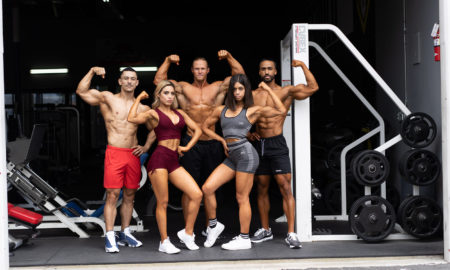
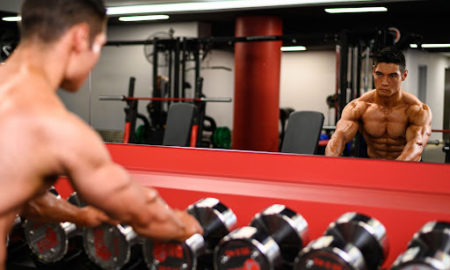














You must be logged in to post a comment Login